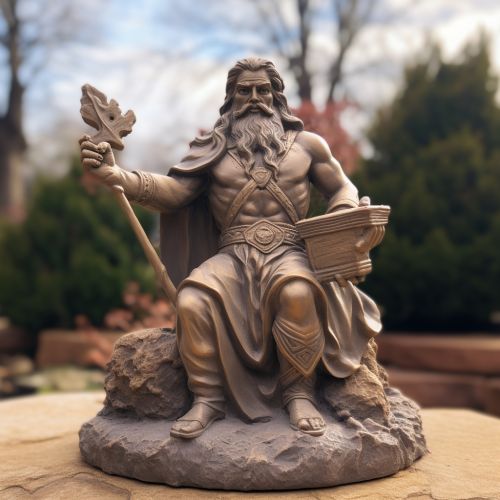Perun
Origins and Mythology
Perun is the highest god of the pantheon and the god of thunder and lightning in Slavic mythology. His other attributes were fire, mountains, the oak, iris, eagle, firmament (in Indo-European languages, this was joined with the notion of the sky of stone), horses and carts, weapons (hammer, axe (Axe of Perun), and arrow), and war. He was first associated with weapons made of stone and later with those of metal.
Perun is strongly correlated with the near-identical Thor of Norse mythology and with Indra of Vedic traditions. The association with Thor, known in Germanic mythology as the thunder god wielding a hammer, seems to be reinforced by the Slavic tradition of celebrating Perun with feasts and songs when it thunders.


Cult of Perun
The primary sanctuary of Perun was located near the estuary of the Dnieper into the Black Sea, surrounded by the sacred oak grove. This was the most important location of the cult of the Slavic pantheon. There, Perun was worshipped in the form of a tall column, sometimes with a head with four faces. At the top of the column, there was a statue of a bird, probably a dove. The column was made of stone or wood and was always located in the open air.
Perun in Folklore
In folklore, Perun is often invoked during severe storms, especially those involving lightning. There are also numerous toponyms, especially in Ukraine and Croatia, named after Perun. Some researchers believe that the cult of Perun continued to be practiced well into the 20th century, particularly in remote rural areas.
Perun in Modern Culture
In modern times, Perun has become a popular figure in literature and video games. He is often depicted as a powerful warrior or a wise ruler, and his symbol, the axe, is commonly used as a symbol of strength and power.
